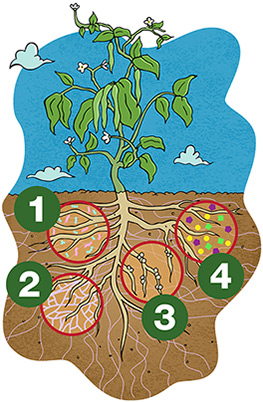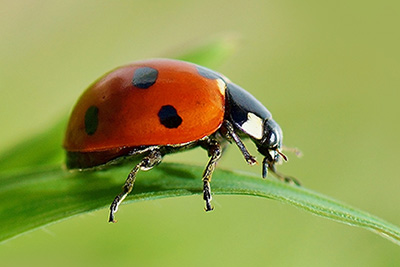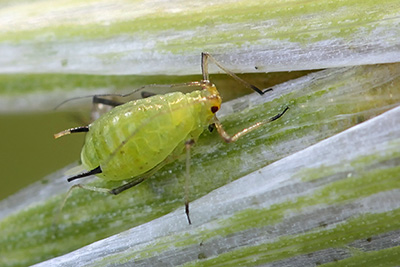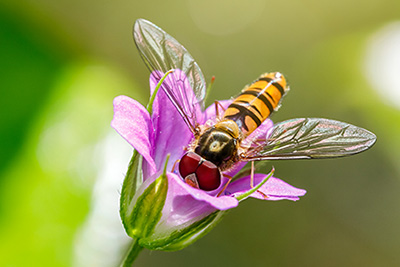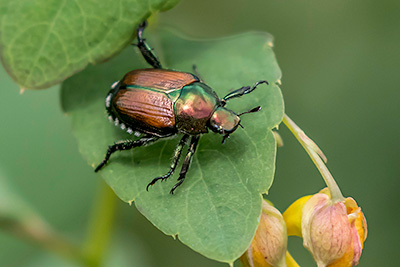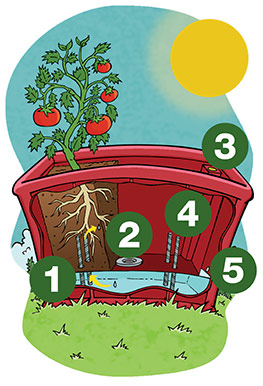
Welcome to the Soil Lab Garden
Explore the garden, pick up a few gardening tips, and learn how healthy, living soil is key to producing ample crops.
Living Underground
Did you know that soil is home to billions of tiny living things known as microbes? Just like above-ground garden critters, some are friends and some are foes.
Soil microbes and plants inhabit the same world. They constantly interact with each other: they exchange food, protect each other from enemies and, together, they alter the soil environment to better meet their needs.
Meet Some Microbes
Plants use chemical messages to communicate with microbes. They release substances into the soil—root exudates—that attract their friends and repel their foes.
1. Root-zone bacteria
What are they?
Single-cell microbes that live around the plant roots.
The Deal:
These bacteria transform nutrients—minerals—in the soil into a form that plants can use. In exchange, the plants feed them root exudates.
2. Mycorrhizal fungi
What are they?
An underground network of mushroom fibres that connect into plant roots.
The Deal:
This mushroom network acts like an extension of the roots, bringing far-away nutrients and water to plants. In exchange, it feeds on sugars in the plant roots. Root exudates trigger the germination and growth of mushroom spores—fungi “seeds.”
3. Root exudates
These substances consist of amino acids (building blocks that make protein), sugars and fatty acids (building blocks of fats).
4. Nitrogen-fixing bacteria
What are they?
Single-cell microbes that live in bumps on the roots of legume plants (such as peas and beans).
The Deal:
Plants need nitrogen to grow. These bacteria turn nitrogen in the air into a form that plants can use. In return, the bacteria help themselves to sugars in the plant roots. The bacteria are attracted by root exudates.
Illustration of a bean plant with cutaway view of the root system and soil. Four numbered circles magnify different sections of the root system. Circle 1: Close-up of roots surrounded by small, pink oval bacteria and small, blue round bacteria. Circle 2: Close-up of roots intersected with pink filaments. Circle 3: Close-up of roots surrounded by yellow circles, green squares and purple pentagons. Circle 4: Close-up of roots covered with small, beige spheres.
Microbial Starter for Soil
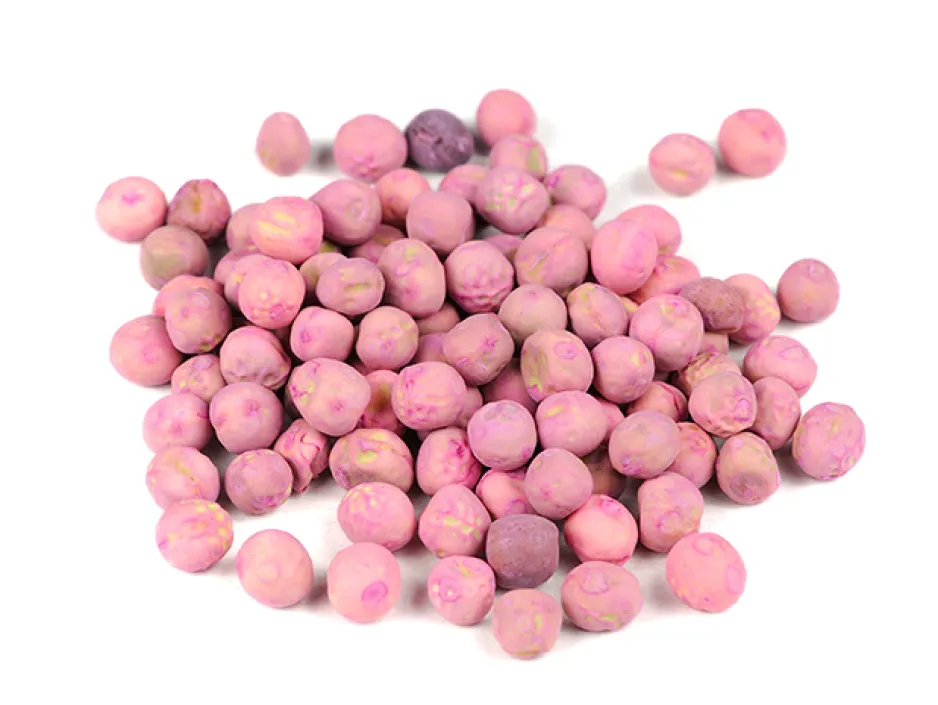
Did you know that you can boost the population of friendly microbes in the soil by adding inoculants? These live mixtures contain microbes like mycorrhizal fungi or nitrogen-fixing bacteria, which colonize the plant roots as they grow.
Home Sweet Home
Many different critters visit and live in our garden. Some are helpful, while others cause harm.
Can you tell the friends from the foes?
Ladybugs
✅ Friends
Ladybugs eat small pests, such as aphids, that live on and damage plants.
Orb weaver spiders
✅ Friends
These large spiders eat flying insects that get trapped in their sticky, circular webs.
Cabbage White butterflies
❌ Foes
These butterflies lay their eggs on plants from the cabbage family, such as kale and broccoli.
Their caterpillars—cabbage worms—then chew away the leaves.
Bumble bees
✅ Friends
These bees pollinate flowers as they forage for nectar and pollen.
Aphids
❌ Foes
As they feed, sap-sucking aphids weaken plants and spread diseases between them.
Hover flies
✅ Friends
Hover fly larvae feast on aphids, while the adult flies pollinate flowers as they feed on nectar and pollen.
Japanese beetles
❌ Foes
These invasive beetles have few predators, and a big appetite for plant leaves, flowers and fruit. After their visit, little is left, aside from plant skeletons.
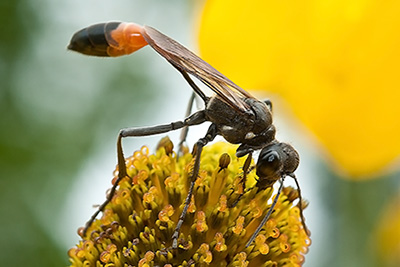
Parasitic wasps
✅ Friends
These wasps lay their eggs inside the bodies of some insect pests. The wasp larvae then eat the pests’ insides, which kills them.
The Art of Watering
Water is essential for all living things. In plants, it carries food through stems, leaves and fruit. But plants need just the right amount of water. With too much or not enough water, plants can’t get the nourishment they need from the soil.
Just Right!
Self-watering planters water plants for us, and reduce the amount of water used over a growing season. The tank holds a large volume of water, which the soil absorbs as it’s needed. These planters give plant roots the right amount of water, in both wet and dry weather.
1. Tank
The tank stores the water.
2. Rain filter
After a heavy rain, surplus water drains into the tank through a mesh filter.
3. Fill port
This is where we add water to the tank.
4. Wicking stem
This slotted plastic tube contains a fabric wick. Half of the tube dips in the tank, and the other half is in contact with the soil in the planter. The soil sucks up water from the tank, through the wick (a process called “capillary action”). This keeps the root zone moist.
5. Drainage hole
Excess water pours out from this hole.
Illustration of a red garden planter with a cutaway at the front that reveals, on the left half, a tomato plant, its roots, and a column of soil. The right side is empty and the bottom of the container is filled with water. A series of numbers are distributed throughout the illustration. Number 1 is at the bottom left in the water. Number 2 is in the center of the planter, above a gray circle with a hole in the middle. Number 3 is on top of the planter, near a small yellow ring. Number 4 is in the planter, near two long grey tubes. Number 5 is on the right, above the water and next to small hole in the side of the planter.
Be a friend to your soil
Growing food takes a lot of time and know-how. It involves preparing beds, planting, watering, weeding and fertilizing, as well as dealing with pests, disease and bad weather.
But by adopting some soil-friendly practices, gardeners can cut down on their workload and get better harvests, while at the same time helping underground life thrive. It’s a win-win opportunity!
Here are five things that you can do to build up healthy garden soil.
 KEEP IT COVERED
KEEP IT COVERED
Add a layer of mulch, such as wood chips, straw or fallen leaves, on top of the soil.
This will help:
- the soil to absorb and retain moisture
- prevent weeds from sprouting
- feed soil microbes and organisms
- improve the soil
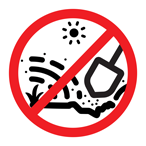 Don't Disturb it
Don't Disturb it
Don’t turn over (till) the soil; plant directly into it instead. Make permanent beds and paths.
This will help:
- maintain the soil’s structure, letting water and air into the soil
- protect soil critters and their homes (worm tunnels, ant nests, etc.)
- keep established soil microbe communities working
- reduce soil erosion
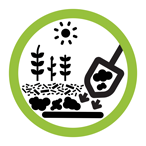 ADD ORGANIC MATTER
ADD ORGANIC MATTER
Place compost or well-rotted manure at the base of plants (under the mulch), at mid-season.
This will help:
- provide nutrients for plants
- feed soil microbes and organisms
- the soil to absorb and retain water
- improve the soil
 Plant year-round
Plant year-round
Always have plants growing in your garden. Cut dead plants and weeds at the base instead of pulling them out, leave in legume “weeds,” such as clover, and let plants overwinter in the garden.
This will help:
- prevent erosion
- feed soil microbes through winter
- enrich the soil with nitrogen thanks to the nitrogen-fixing bacteria that live on the roots of legumes such as clover.
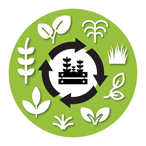 Rotate your crops
Rotate your crops
In each plot or bed, plant crops from a different plant family than the one that was growing there over the previous season.
This will help:
- prevent the soil from becoming poor in certain nutrients
- prevent infestations from overwintering pests
- improve the soil
- encourage soil microbe diversity


